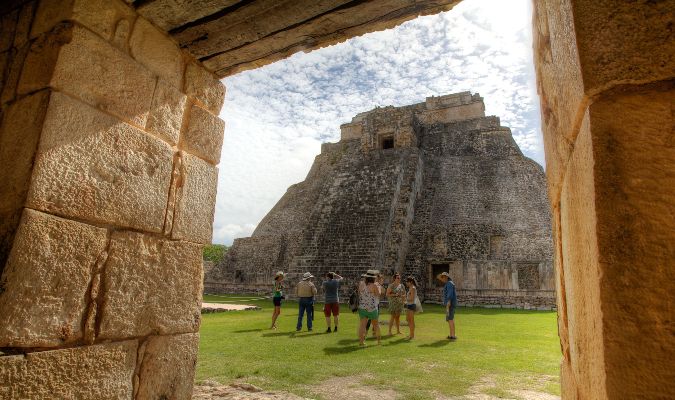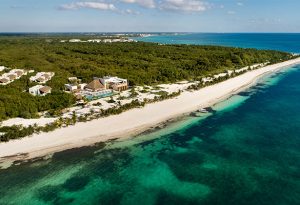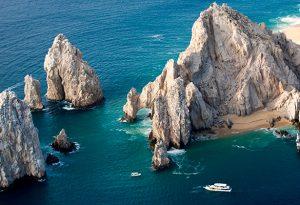The Puuc Route (Ruta Puuc) is a collection of five ancient Maya sites in the Yucatan, around 85km south of Merida. Thanks to its collection of well-preserved towering pyramids and grand palaces, it has become a must-visit attraction for culture-loving visitors to the region.
If you’re heading to the area, do take time out to journey along the route, learning more about the people who lived there, their religion, and how everyday life would have been. Check out this guide to the Puuc Route for an idea of what to expect.
Guide to the Puuc Route
Uxmal
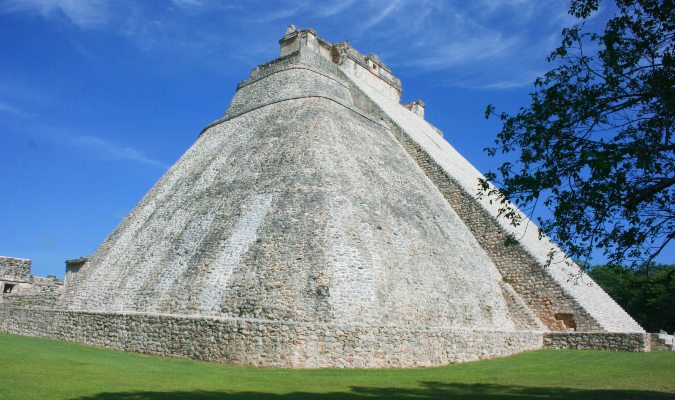
Uxmal (rather pleasingly pronounced oosh-mal) is among Mexico’s greatest archeological sites, famed for its towering structures and intricate carvings. It’s thought the city flourished from 700 to 1,000AD with anything from 20,000 to 25,000 people inhabiting the city.
On the site, you’ll find a wealth of Maya ruins including the intricately decorated Governor’s Palace, a Maya ball court, and the Great Pyramid, which you can still climb.
Uxmal’s most eye-catching ruin, however, is the Pyramid of the Magician (also known as the Pyramid of the Soothsayer, Pyramid of the Sorcerer, or — oddly — the Pyramid of the Dwarf). The legend surrounding the name has been muddied over the years, but typically involves a magician (or dwarf hatched from an egg) being challenged to build a pyramid in one night. With magic on his side, the sorcerer completes the task, leaving the structure we see today.
Kabah
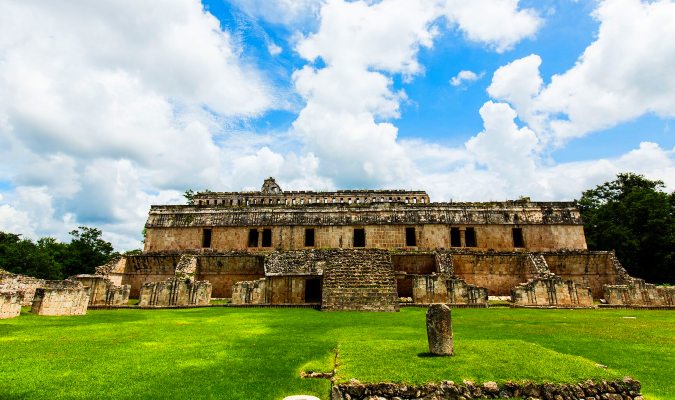
Uxmal to Kabah: 23km/14.5 miles, 25 minutes
The second stop on the Ruta Puuc is Kabah, another important Maya city which flourished at around the same time as Uxmal. Undoubtedly, its most enticing attraction is the Palace of Masks, an ancient temple decorated with more than 300 masks of the rain god, Chaac.
It’s thought the Maya deity was a particular favorite in the region as, unlike many other sites in the Yucatan, there are no cenotes from which to collect fresh water. Instead, the Puuc people were forced to rely on rainwater, hence their devotion to Chaac.
Aside from the Palace of Mask, there is the Arch of Kabah, The Palace, and many more ruins to explore.
Sayil
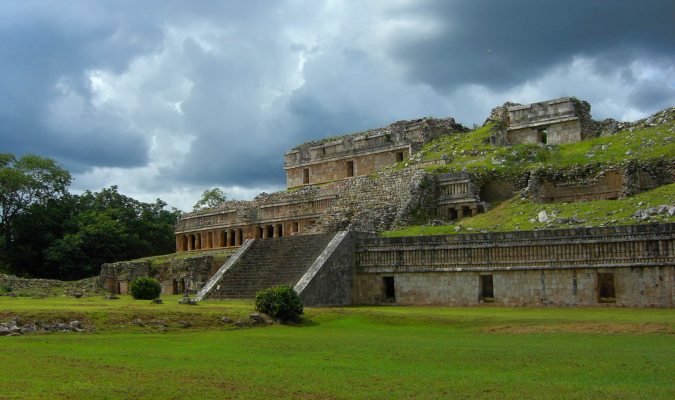
Kabah to Sayil: 10km/6.5 miles, 10 mins
The mid-point of the Puuc Route is Sayil, another important city that hit its height around 900AD. Here you will find the magnificent El Palacio, an 85-meter-long stone behemoth constructed in three separate stories. Its façade is a tribute to Puuc design, displaying typical décor from the region including masks of the famed rain god, Chaac.
Also in Sayil, you will find El Mirador, a temple with a crown-like upper-story, and a fascinating stela dedicated to a god of fertility.
Xlapak
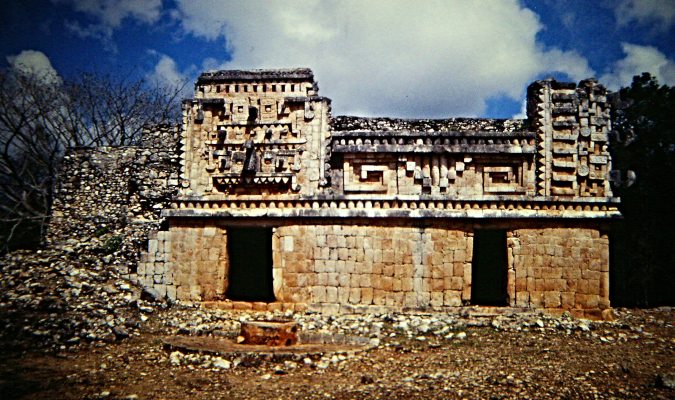
Sayil to Xlapak: 5km/3 miles, 6 mins
The fourth stop on the route is Xlapak, a small site featuring a nine-room palace with an ornate exterior. Xlapak is not as feature-rich as some of the other stops on the Puuc Route, which is why it is sometimes skipped altogether. However, the palace itself is an excellent demonstration of classic Puuc decoration, which includes a plain lower half and intricately decorated upper half.
Labna
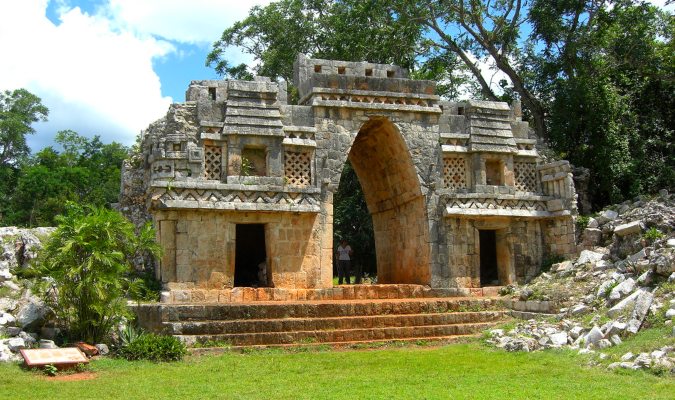
Xlapak to Labna: 3.5km/2 miles, 5 mins
The final stop is Labna, which appears to have hit its heights around 600 to 900AD. Perhaps its most famous structure is the intricately carved Labna Arch. This intriguing ruin once served as the entrance to two courtyards and has remained extremely well preserved.
Elsewhere in Labna, you will find El Palacio, a stretching ruin decorated with more Chaac masks, and El Mirador, a pyramid topped with a temple.
Bonus stop: Grutas de Loltun
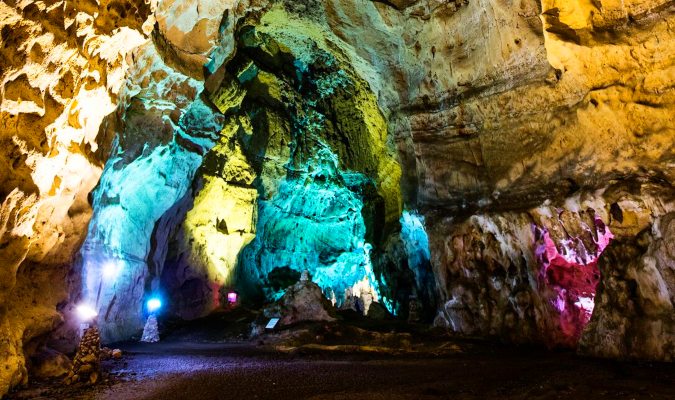
Labna to Grutas de Loltun: 19km/12 miles, 25 mins
If you’ve got time at the end of your day, stop at the Loltun Caves, a beautiful collection of underground caves with a rich history and gorgeous natural features. We know the caves have been inhabited by humans for more than 2,000 years while archeologists have also made intriguing finds including cave paintings, fossils, and Maya handprints.
Aside from their historical importance, the caves are also undeniably beautiful with gorgeous stalagmites and stalactites and other beautiful geological formations. Well worth a visit.
Where to book your tour of the Puuc Route
Journey Mexico offers an in-depth tour of the Puuc Route, which includes an expert bilingual guide and private transportation. Speak to a Journey Mexico Travel Planner today to organize your trip.

